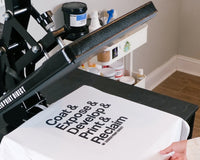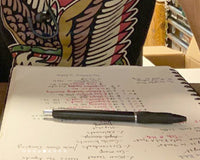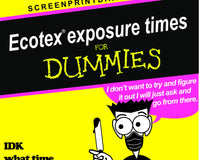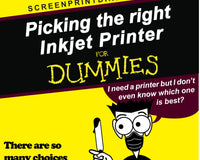High density and puff screen printing additives are both specialized types of ink additives used in the screen-printing process to achieve different visual and tactile effects on printed materials. Here's a breakdown of the key differences between these two types of ink additives:
- Effect and Appearance:
- High Density Additive: High density additive ink is designed to create a thick, raised, and textured print on the fabric or substrate. It results in a three-dimensional effect that makes the printed design stand out with a pronounced, glossy finish.
- Puff Ink Additive: Puff additive, on the other hand, is used to create a raised, puffy or embossed effect in the printed design. When exposed to heat, puff ink expands and creates a three-dimensional, raised appearance. It has a softer, more tactile feel compared to high density ink.

- High Density Ink Additive: This additive is known for creating a solid/hard texture unlike puff ink that is soft and airy. Some HD additive is smoother and shinier texture due to its high gloss finish. Some HD additive has a matte finish and a rough tree bark texture.
- Puff Ink Additive: Puff additive creates a softer, more cushioned texture, giving the printed area a raised, velvety feel.
- High Density Ink Additive: High density ink additive is typically applied in thicker layers during the screen-printing process to achieve its raised and glossy effect. For this ink additive you need to create a thick stencil with emulsion, it won’t work with normal emulsion stencil. We recommend using Tex Red or Blue HV to create this stencil as it makes a thicker raised coat on the screen.
- Puff Ink Additive: Puff additive is applied like regular screen-printing ink, but it expands and puffs up when exposed to heat. We do not recommend using a heat press with puff as it will flatten out the puff texture.

Pictured above is a screen made for HD printing. Note the thick stencil.
- High Density Ink Additive: It is commonly used for creating a bold, textured, and shiny design on T-shirts, and other promotional textile substrates. It's suitable for designs that require a standout, glossy, and visually striking appearance.
- Puff Ink Additive: Puff additive is often used for designs that require a softer, raised effect. It's popular for creating vintage or retro-style prints, and it can add a playful and tactile element to garments and merchandise
- High Density Ink Additive: High density ink additive tends to be more durable and can withstand multiple washes without losing its texture and gloss.
- Puff Ink Additive: Puff additive may not be as durable as high-density ink, and the raised effect may crack and chip off like normal plastisol ink.
In summary, the main difference between high density and puff screen printing ink additives is the visual effect it creates and the application. High density ink additive produces a glossy/matte, raised, and textured appearance, while puff ink additive creates a softer, puffy, and embossed effect. The choice between the two depends on the desired look and feel for a particular design or application.
Try out Rapid Cure Puff Additive and HD Additive today and elevate your prints! Both of these ink additives cure at low temps and can be used with all Rapid Cure Inks as well as any standard inks.
We love to hear from you, leave a comment below to chat
xx
Screen Print Direct








3 comments
AlexZolotov
https://t.me/s/OAllaxTg
AlexZolotov
https://t.me/s/lami_lady/132
AlexZolotov
https://t.me/s/lami_lady/200